Remembering Harry Willis

A studio portrait of Private Henry Victor Willis of the 31st Battalion.
Harry Willis was a fresh-faced teenager from country Victoria who went off to fight during the First World War.
His four older brothers – Bert, George, David, and Sydney – enlisted after the war broke out, and Harry was given a white feather (a symbol of cowardice) despite being underage.
Determined to join up, he forged his mother’s signature and enlisted in July 1915, just six months after his older brother, Sydney.
Sydney had been wounded on Gallipoli and was evacuated to Egypt, but the pair was reunited on the Western Front in northern France the following year. They embraced as they said their final farewells, knowing they might not see each other again.

Harry Willis served on the Western Front.
Less than a month later, Harry was dead, one of more than 5,000 Australians who were killed, wounded, or taken prisoner during one of the worst days in Australian military history.
Harry had been shot through the jaw during the bloody fighting at Fromelles in July 1916, and his body was never recovered.
Devastated by Harry’s death, Sydney visited Fromelles before he returned to Australia in 1919, but never got over the fact his brother’s body was missing, leaving the family with no grave at which to mourn.
Back home in Australia, their mother, Janet, was overcome by grief. She had lost her husband before the war broke out, and had now lost two sons.
Harry’s older brother David died at the Alfred Hospital in Melbourne on 26 August 1916, just two months after Harry was killed at Fromelles, and a third son died shortly after the war ended.
She mourned them for the rest of her life, and was buried with Harry’s medals when she died.
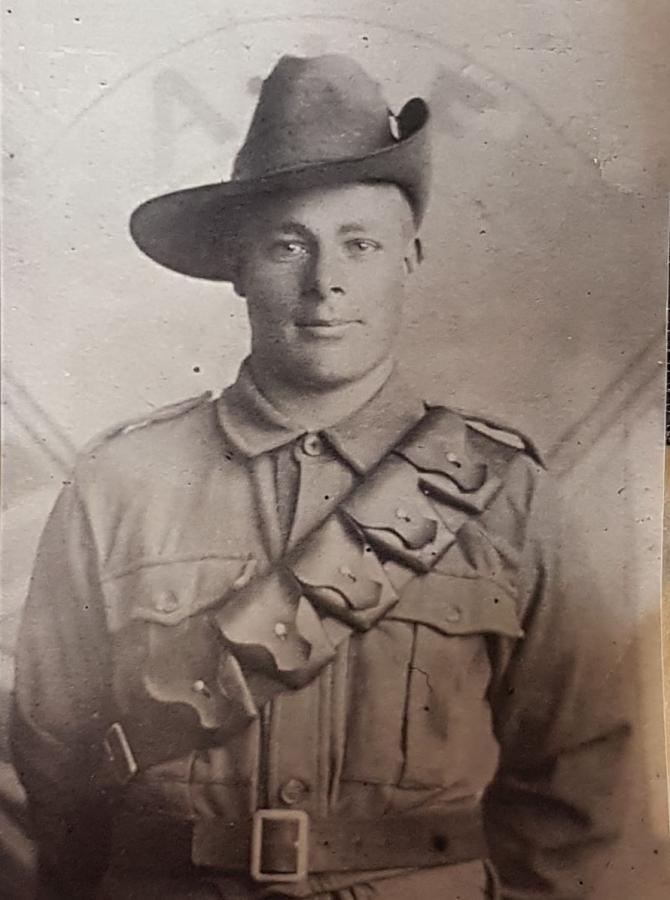
Harry's older brother Sydney was wounded on Gallipoli and later served on the Western Front.
But the family never forgot their service and sacrifice.
Decades later, Harry’s great-nephew, Tim Whitford, served as a tank commander in the army and spent years trying to find out where Harry was buried.
In 2006, he joined with Lambis Englezos, a retired teacher from Melbourne, who had a theory about where the missing soldiers from Fromelles were.
Together, the pair set out to find the missing men using archival material and contemporary aerial photographs, and in 2008 archeologists discovered a mass grave where they said it would be.
Harry’s good luck charm provided the vital clue. After the battle of Fromelles, German soldiers had, on instructions, removed all forms of identification from bodies before putting them in bags and sending them to the Red Cross in Geneva. But at some stage, the small, horseshoe-shaped medallion that the Alberton Shire Harry had been given when he enlisted in Gippsland had dropped out of his pocket.
More than 90 years later, it was picked up by a metal detector, a key piece of evidence linking an Australian soldier to the site at Pheasant Wood.
The mass grave contained the bodies of 250 British and Australian soldiers, including Harry. The remains were reburied in the newly created Fromelles (Pheasant Wood) Military Cemetery in 2010. So far, more than 120 Australian soldiers have been identified using DNA technology, forensic science, and historical data.
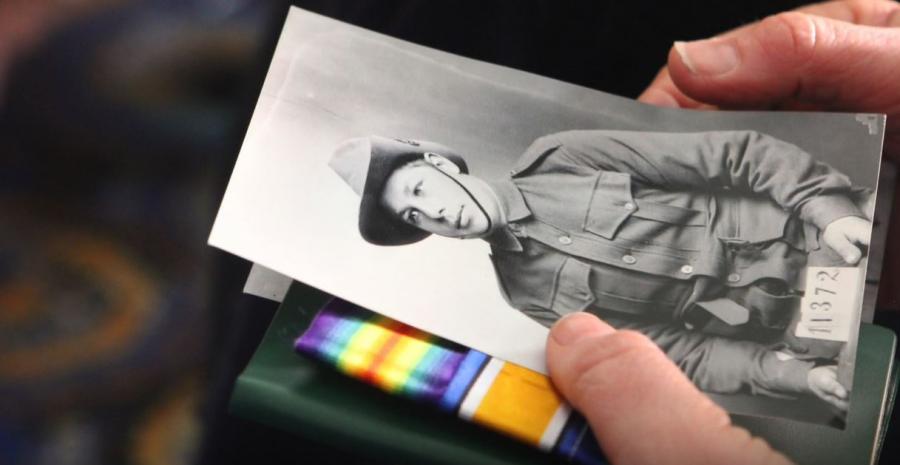
Harry Willis: "Syd always lamented that his brother was never found."
For Sydney’s granddaughter, Denise McFarlane, the news that her great-uncle Harry had been found was particularly poignant.
Denise is one of 50,000 volunteers from around the world who have been involved in the 5,000 Poppies project, a powerful tribute of respect and remembrance which has culminated in a moving display of 62,000 handmade poppies at the Australian War Memorial as part of a five-week commemorative program marking the centenary of the Armistice that ended the First World War on Remembrance Day 2018.
“Syd always lamented that his brother was never found, and it just ate his heart out,” Denise said.
“When they matched the DNA and Canberra rang me to say that Harry had been formally identified, I rang my mum. She’s normally in Bendigo … but she said, “You’ll never guess where I am. I’m in Yarram. And, in fact, I’m at Syd’s grave.’
“I said, ‘Mum, can you please tell Syd that Harry has been found.’”
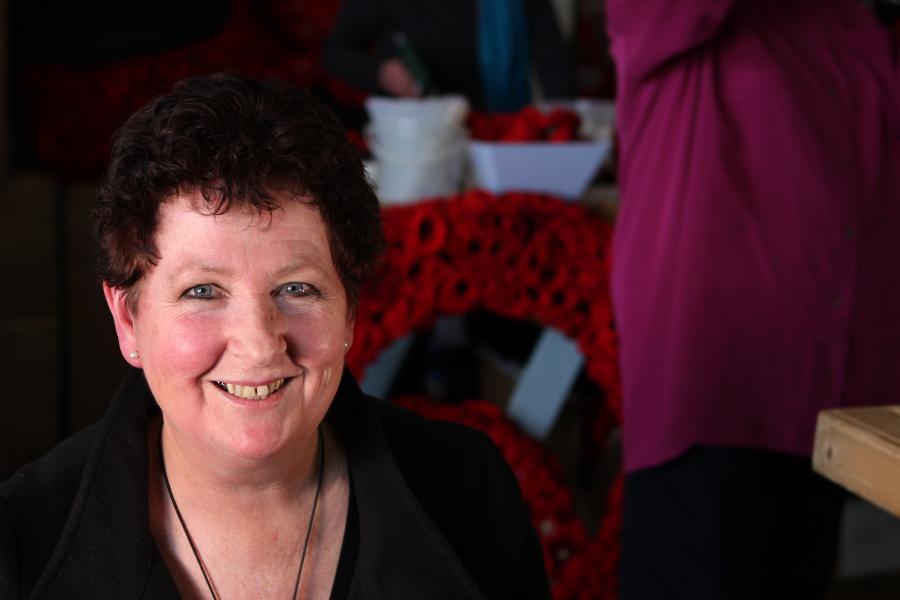
Denise McFarlane: "Every person deserves to be known."
Denise will never forget travelling to the battlefields of northern France and finally being able to visit Harry’s grave.
“It was amazing walking through the fields of Fromelles,” she said. “You just look at it, and you think, why was there even a battle here? I had a bit of a shiver, and I remember Tim and Lambis looked at me, and Tim said, ‘I reckon that’s where Harry was killed – I’ve had the same shiver.’”
The official dedication of the new cemetery on 19 July 2010 was particularly moving for the family.
“It’s something that resonates so deeply, and when Harry was found it was like this vibration went through me,” she said. “Every person deserves to be known and we held a funeral service for him so that he had family with him.”
The epitaph that Harry’s grief-stricken mother had composed in 1918 now adorns his headstone. It reads simply: “Our Harry rests here … Duty done.”
“He was her youngest son and she mourned him so much that she was buried with his medals,” Denise said. “That’s another level of mourning, and I knew of mothers who would never switch the light off at night, hoping that their son would come home, so how can we measure that?
“Out of five sons who enlisted, she virtually lost three – one died before he got over there from meningitis and one died not long after from the effects of the war – and then the family went back to farming, and life went on.”
Denise’s grandfather, Sydney, named his son Harry after his brother and signed up when the Second World War broke out, as did his son.
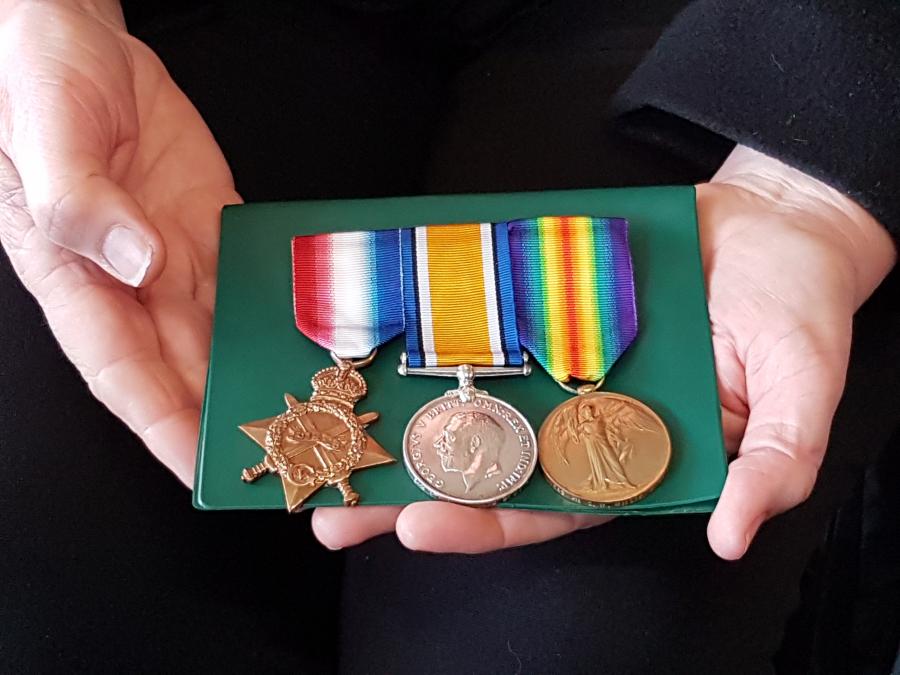
Denise McFarlane holding her grandfather's medals.
For Denise, who served in the Army Reserve and worked for Defence, the 5,000 Poppies project was a meaningful way of paying tribute to their service and sacrifice.
The project was started by co-founder Lynn Berry and her sister-in-law Margaret Knight more than five years ago as a personal tribute to their fathers’ own service during the Second World War, but it soon captured the public imagination and grew into a world-wide community project that took them from the steps of Federation Square in Melbourne to the Chelsea Flower Show in London and the battlefields of northern France to mark the 100th anniversary of the battle of Fromelles.
“I just felt we owed some sort of acknowledgement to past service people, and one day I was just walking through Federation Square and there it was … and that was it, I was part of it,” Denise said.
“I remember the first time... There’s a little process where you shake the poppies to make sure that they are on the mats properly and I was crying because it hit me that every poppy represented somebody and there was a reason for that poppy.
“Each one is individual in its own way, as we all are, and they are made with love with somebody in mind – they are not just mass produced knitted/crocheted/felted bits of wool, they are representations of family and friends, lost and found.”
Denise even found a long lost relative when she put a photo of Harry’s grave on the dedications page of the 5,000 Poppies website. Another volunteer, Nadine Greenaway, recognised the grave. She and her husband are dairy farmers from Yarram, and Harry was her husband’s great uncle. They now consider themselves good friends as well as family.
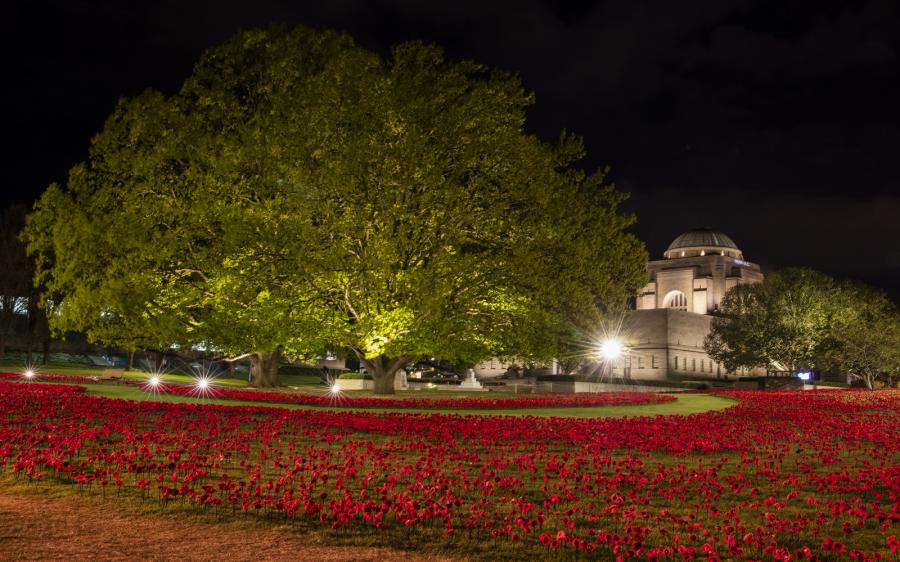
For Denise, these friendships and the “esprit de corps of the Poppy Brigade” have been particularly special.
“It’s just one of those special things,” Denise said. “It’s the community, or the village that I didn’t know I missed, and then when I found it, I thought wow, this is my village. We were all out there and then we just came together with a common bond.”
Her ex-husband’s family are Turkish, and her son, Zane, travelled to Gallipoli to remember both sides of the family. They also travelled to Canberra to lay a wreath at a Last Post Ceremony ahead of Remembrance Day 2018.
“Sometimes you’re just dumb-founded, and you’re just speechless at the futility of war,” she said.
“When my great uncle was killed, his potential family was no more – he couldn’t marry, he couldn’t have children – and it just struck me that there were entire families that ceased because of the war.
“The 5,000 Poppies is a visual representation … of how, just like the wild poppy, something beautiful can grow in sometimes the harsh and most adverse of conditions. A sea of red, a lone poppy – it doesn’t matter, it catches your eye and causes you to catch your breath too as you think about all the energy, love, sadness that each handmade poppy holds …
“I am immensely proud and am humbled to be a part of the team, the team of thousands, but I have always felt the sense of duty to honour our fallen and their living memory. I cannot explain where or why I feel this way, it is just something deeply ingrained in my being.
“It’s just something I felt I needed to do … It was the least I could do.”
The 62,000 Poppies display will be open from 9 am to 10 pm daily from now to 11 November as part of the Memorial’s five-week Honour their Spirit commemorative program marking the centenary of the Armistice on Remembrance Day 2018.
Read the story behind the 5,000 Poppies project here or watch the videos.